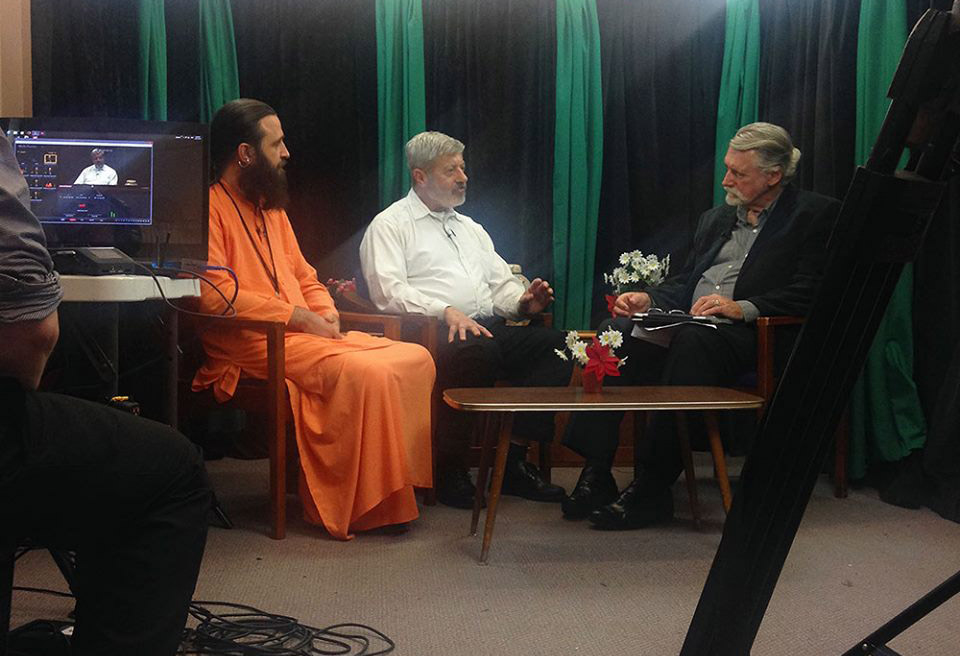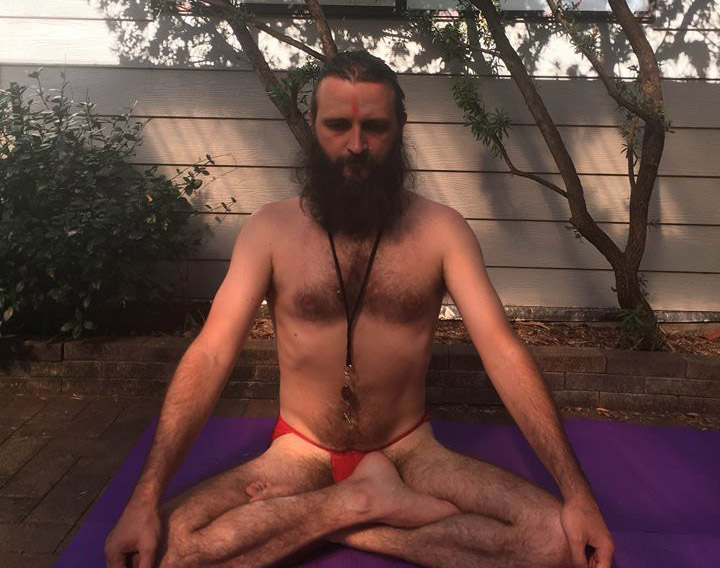Verse 63, Vijñānabhairavatantra Conscientising
Summary of discussion on Vijnana-bhairava-tantra made by Guru Yogi Matsyendranath and Rev. John Dupuche
“The meditator should reflect that his whole body or the universe is composed of consciousness. [The body and the universe can also be considered] conjointly, without thought construct, [as consisting of consciousness]. The supreme awakening occurs in the mind.”
सर्वं देहं चिन्मयं हि जगद् वा परिभावयेत्।
युगपन् निर्विकल्पेन मनसा परमोदयः॥ ६३॥
sarvaṁ dehaṁ cinmayaṁ hi jagad vā paribhāvayet|
yugapan nirvikalpena manasā paramodayaḥ || 63 ||
“The meditator should reflect that his whole body or indeed the universe itself is composed of consciousness.
This is possible because Śiva is consciousness itself, and all reality springs from him and his union with Śakti.
While the unenlightened person distinguishes between unenlightened and enlightened, the fully conscious person sees that all is in fact conscious, each in its own way.
This is remarkable teaching, but Pierre Teilhard de Chardin also notes it in his work The Phenomenon of Man. This seems to be born out by modern physics, which would say that matter is to be considered not so much as inert particles but as sources of information.
Reality is the outcome of the love play between Śiva and Śakti and all reality consists of lesser forms of this love-play. The lesser gods and goddess are engaged in intercourse according to the consciousness that is appropriate to them. The whole of reality is not only vibrant, it is conscious in its own way and capable of being brought to the fullness of consciousness. All reality is vibrating with the intensity of love. For this reason St Paul speaks about the whole of creation groaning and seeking to have the freedom of the children of God, that is to become fully conscious, fully loved and loving.
“creation itself will be set free from its bondage to decay and will obtain the freedom of the glory of the children of God.” (Rm 8:21)
It is the role of the ‘children of God’ and the meditator, to bring this about. This leads to the Omega Point, as Teilhard puts it, where all is fulfilled, blissful and conscious.
This attitude is affirmative, for it sees the possibilities of matter, inert thought it may be. This mighty universe is destined to greatness.
The act of ‘placing’ (nyāsa) seeks to bring all the aspects of the body to consciousness by associating them with divinity. In the Christian tradition the great act of ‘placing’ is the sign of the cross, where Christians name the divine Trinity, Father, Son and Holy Spirit, so that in their very body they are taken up into their communion. And as they trace the mark of the cross on their whole body they take to themselves the whole of the Christian mystery: the death and resurrection of the Lord Jesus. Thus they are conscientising their being by the sign of the cross. Similarly, the sign of the cross is made over the people in blessing at the end of Mass or over any article when it is blessed. When indeed blessing is extended to the whole world, it is being conscientised into the Trinity and the Paschal Mystery. In this way the body and the universe consists of the highest knowledge.
The body is not just the element that that can be seen. It is a microcosm, which contains in itself the whole macrocosm. Indeed, in the Kula initiation rite, the initiand will, at a certain point spontaneously place their hand on one or other part of their body. This signifies that they are united to the yoginī who presides at that point and who has governance over all the worlds associated with that point, for each point in the sweep of the body is associated with a certain world.
This idea of many worlds is found in the Al Fatiha, the opening sura of the Qur’an, where Allah is referred to as the “Lord of all the worlds”, implying not only the world we see but also the worlds we do not see. In the ceremony in preparation for reciting the Al Fatiha and other prayers, the worshippers wash (wudu) their hands and feet and face, the major ‘instruments’ of their activity, not only to purify them from any stain whether physical or moral, but also to bring them to a heightened sense of awareness in preparation for prayer.
“They can be considered jointly, without thought constructs, [as consisting of consciousness[.”
The word yugapan can be understood in two ways. It can contrast with the previous distinction (vā ‘or’) between body and universe, and mean rather ‘both the body and the world’. The word yugapan can also mean that they are seen jointly as one reality, in a way which is without thought (nirvikalpena), without reflecting on the objects, and so with a global sense.
“The supreme awakening occurs in the mind.”
As a result of considering things in this way there is, mentally or from within, the supreme enlightenment. There has been a shift from considering things in opposition, as either object (prameya) or means of knowledge (pramāṇa) or subject (pramātṛ). All become pramiti where the knowers know themselves by means of themselves, where all is non-dual. They are Śiva. This finds its counterpart in Christianity where the Lover, the Loved and the Loving are all one Love.








